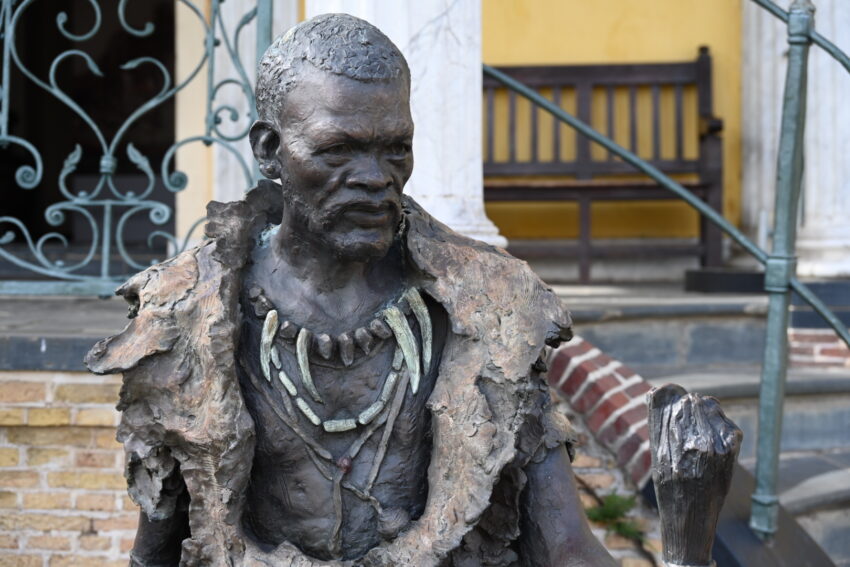Another day, another hotel breakfast – though the Radisson Red’s is every bit as good as the one offered by the Capital 15 on Orange. The cappucinos arrive faster, too.
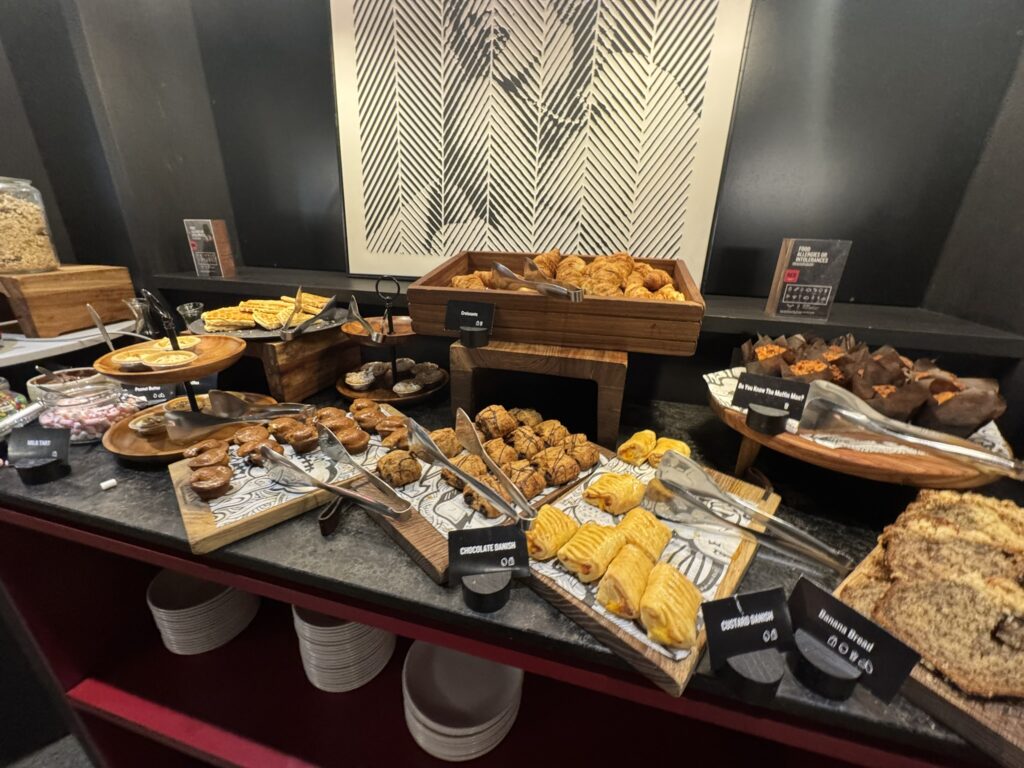
The mood is somewhat spoiled by a mid-breakfast text from Gilbert, who has taken on a half-day tour and so will be unable to take us to the Castle of Good Hope for our tour with Context Travel. Similarly, there’s a marathon on today so none of Gilbert’s fellow drivers are able to fill in for him.
One of my hard-learned Travel Commandments is “Thou shalt not mess around when it comes to transfers”, so we immediately ask the Radisson’s concierge for help. They also note the shortage of taxis on marathon day, but offer to book us in with the hotel shuttle instead – at the eye-watering cost of US$40 each way for a 15 minute cab ride.
But I remember my Travel Commandment and I book the transfer.
The rest of the breakfast is spent grumbling about the price, but I’ve made peace with it by the time I finish my second cappucino.
Up to the room to finish teeth brushing and sunscreen, and then downstairs in time to catch our transfer with the Radisson’s driver, Nolan. We get his WhatsApp number so that we can coordinate with him as needed – which we might, given that it seems likely he’ll be picking us up at the end of our tour.
A quick drive through Cape Town and we’re deposited at the Castle of Good Hope. Our guide – Joline Young – joins us a few minutes later, arriving 10 minutes early.
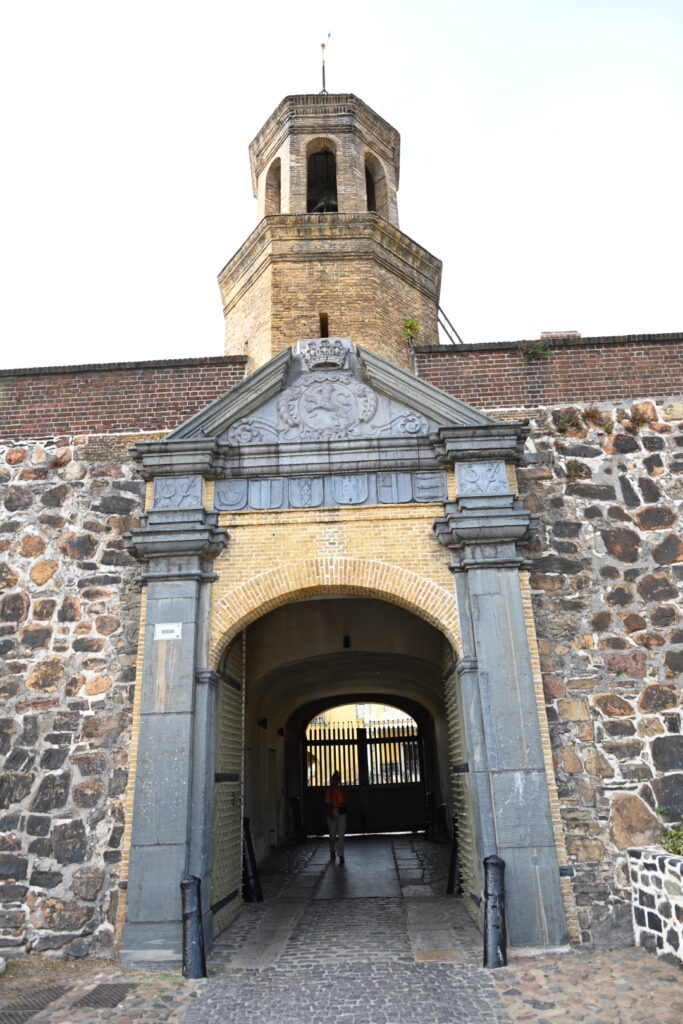
We wander over torwards the fence, where Joline explains that this pentagon-shaped fort was the second one built – the initial four-sided fort, built in 1652, was replaced by the current fort in 1679. The current fort is still the oldest building in Cape Town.
We also take a moment to admire Cape Town’s city hall:

We then go inside the castle and begin exploring:
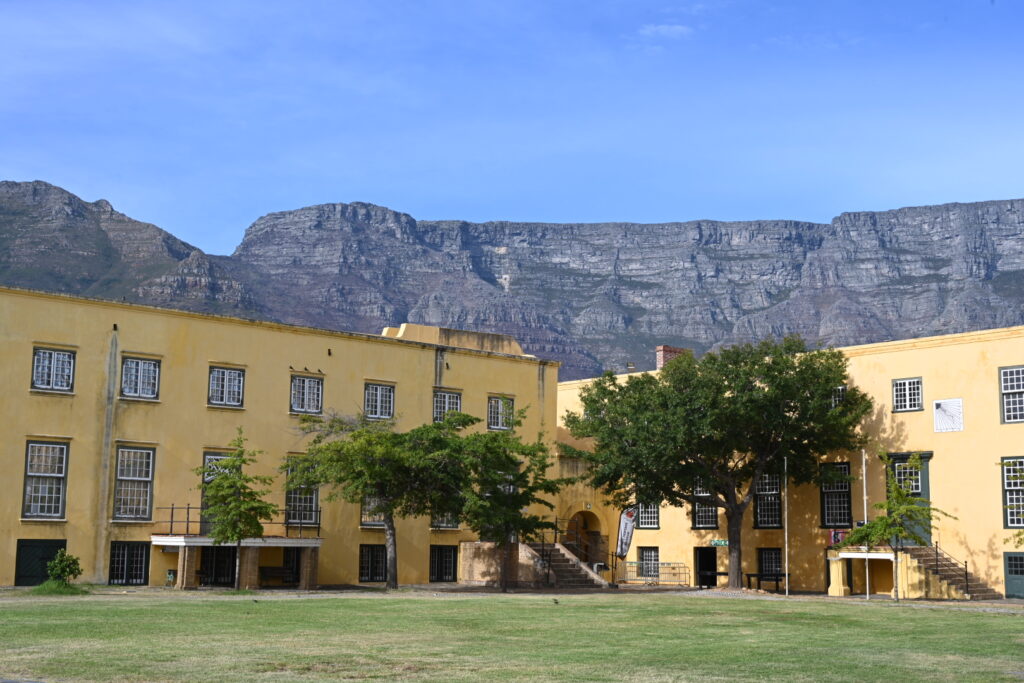
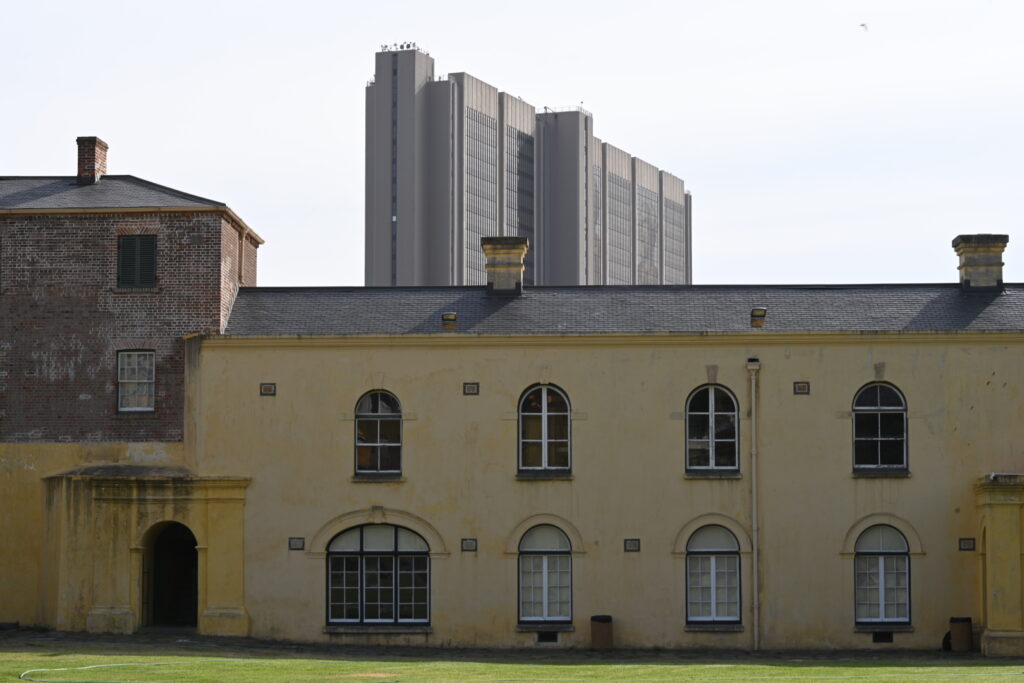
The contrast between historical and modern Cape Town is striking
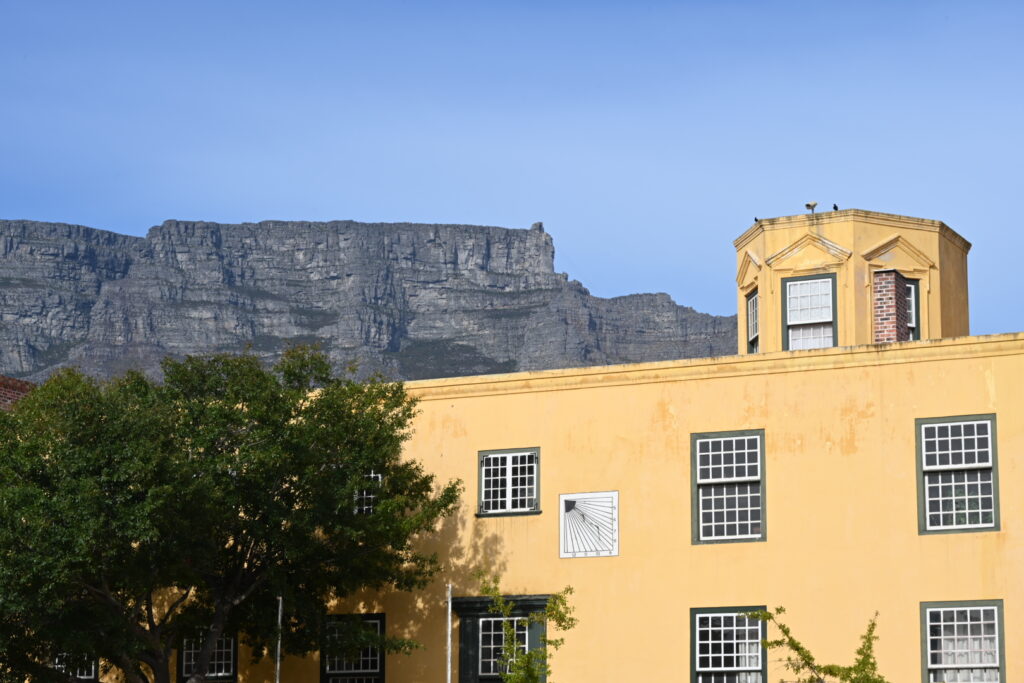
As is the contrast between the built and natural environments
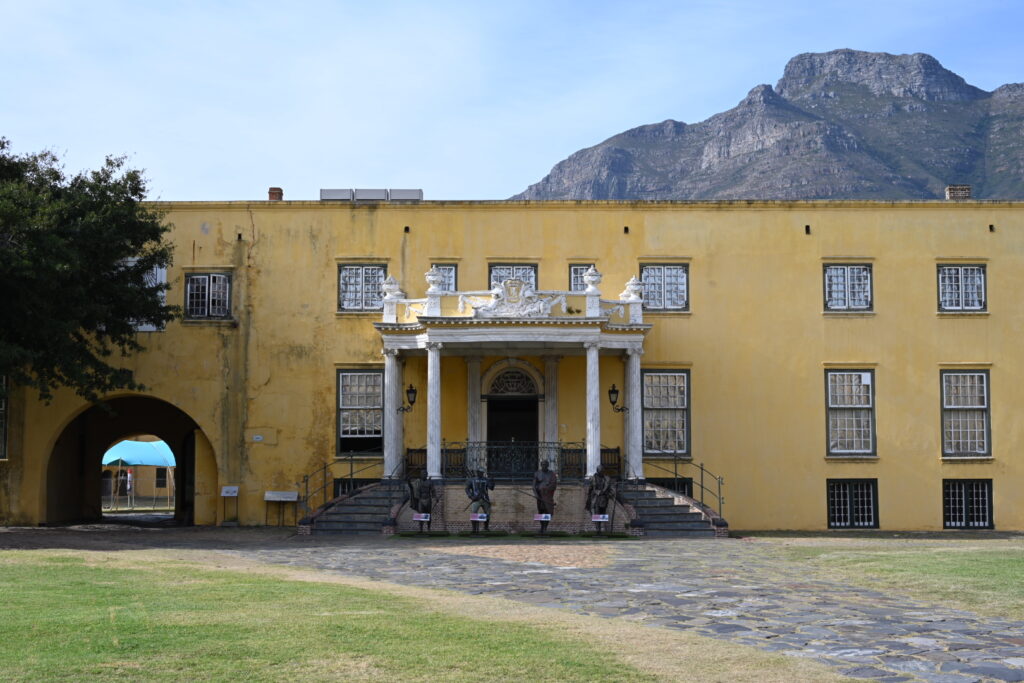
At the front are a series of statues of influential figues in South African history – typically influential for the ways in which they defied the European rulers.
King Sukhukhune:
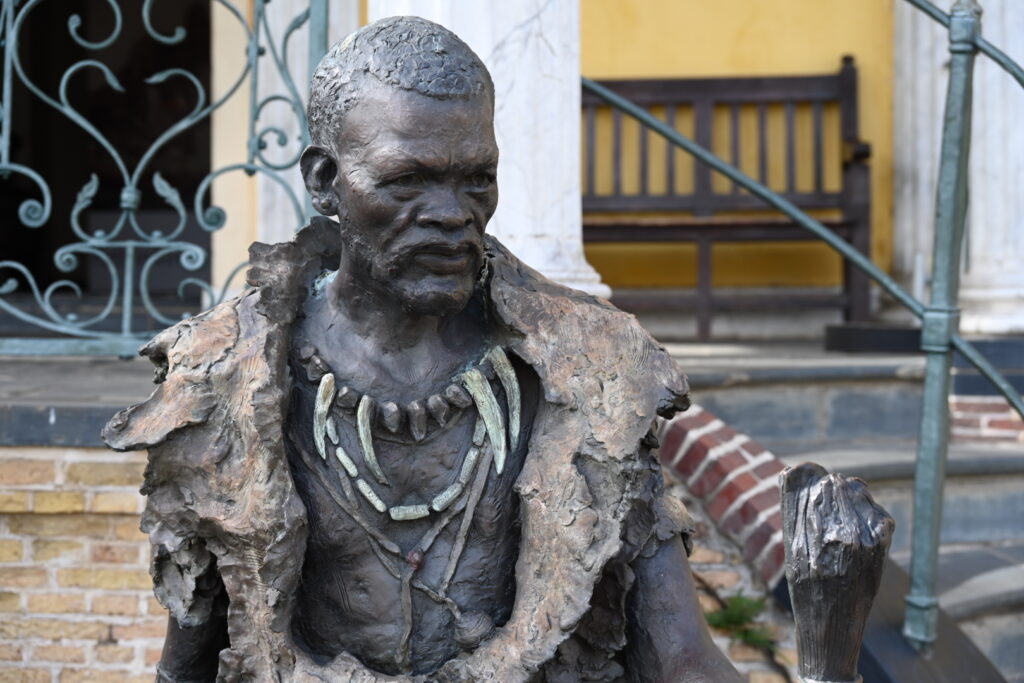
Fearless leader of the BaPedi, captured and detained at the Castle of Good Hope in 1879.
Nommoä Goringhaiqua:
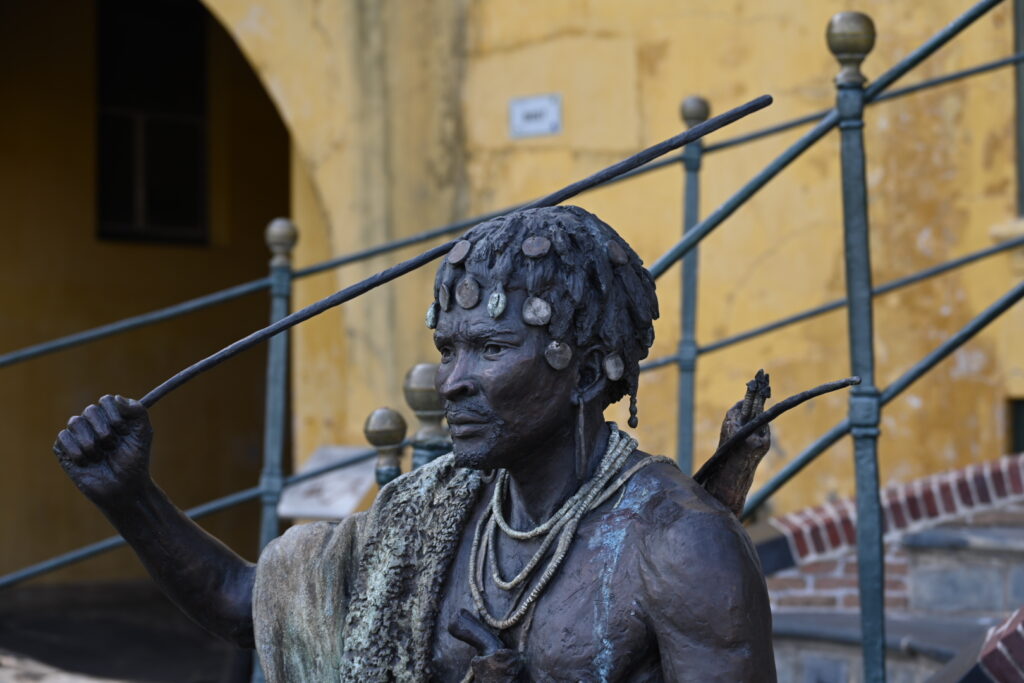
Leader of the a band of warriors fighting against the Dutch in the first Dutch-Khoi war in 1659.
We then move into the castle itself:
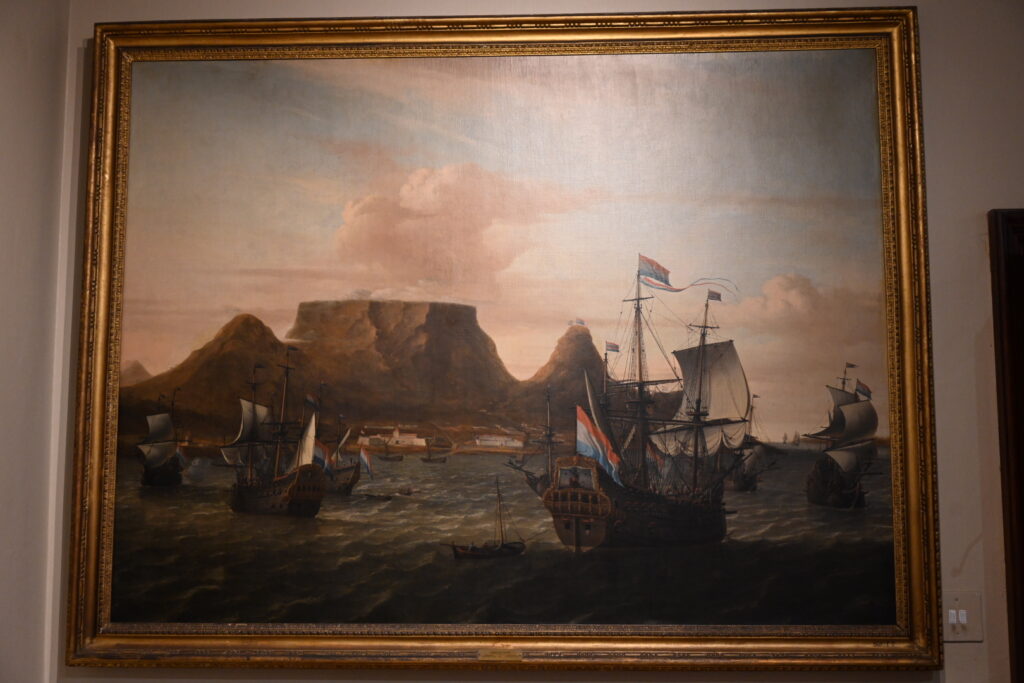
The history of modern Cape Town began in 1652, when the Dutch East Indian Company first established a ‘refreshment station’ for its ships on the shores Table Mountain. It became the first major hub in South Africa, hence it’s nickname as the “mother city”.
The Dutch East Indian Company brought in a large number of slaves from across Africa and Asia to build Cape Town and work on its ships. The Company played a critical role in all aspects of the colony’s establishment, governance and daily life.
Even the dishware used in the colony bore the Dutch East Indian Company logo:
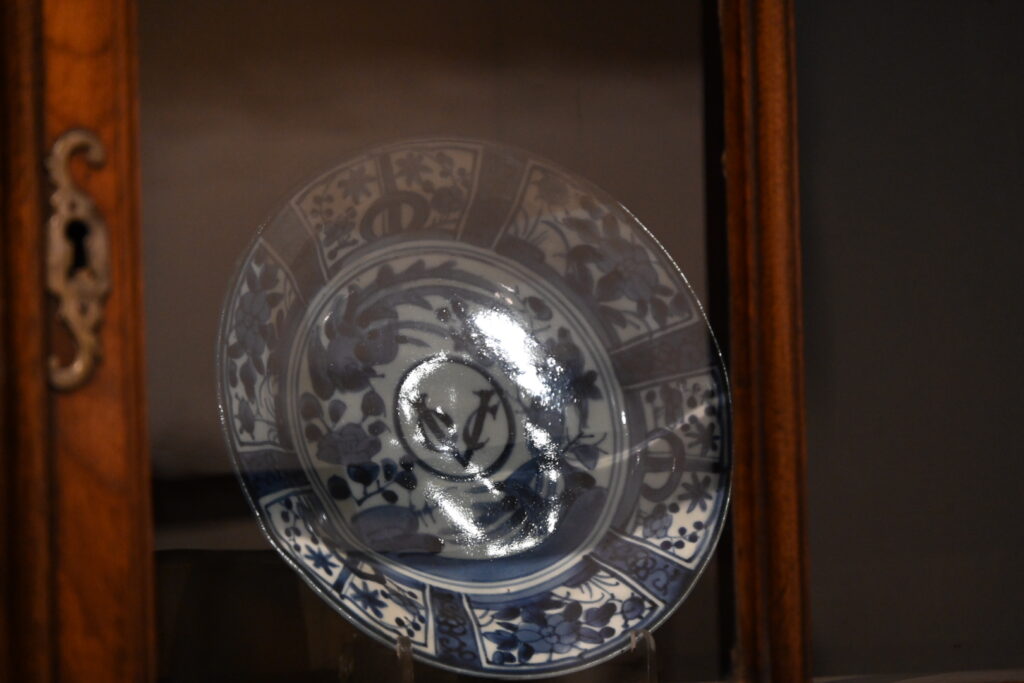
Jan Van Riebeeck – a Dutch colonial administrator – is considered to Cape Town’s founder. Interestingly, for years his portrait was presented as this (particularly during apartheid):
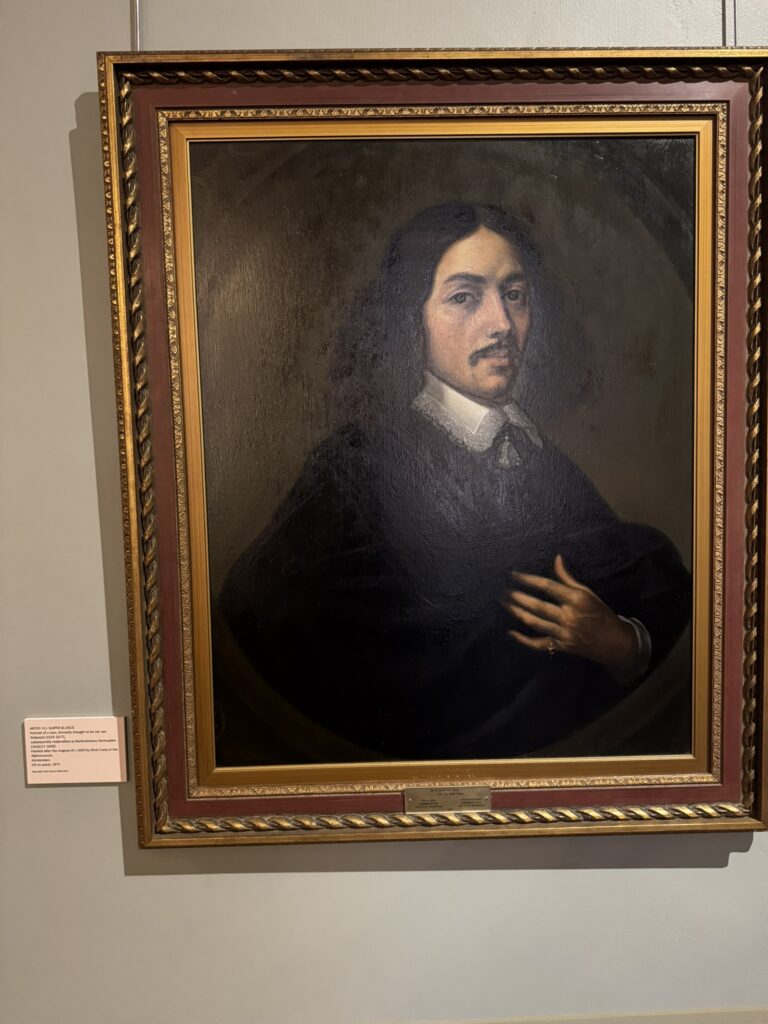
When in reality this is his true portrait:
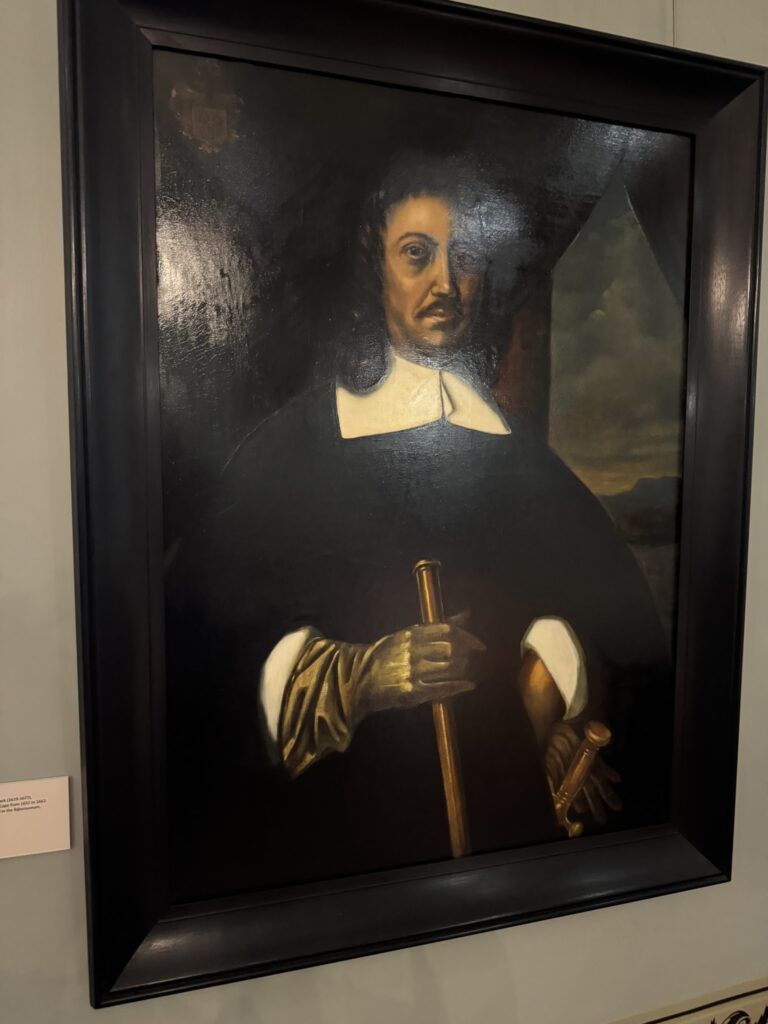
We also visited the castle’s dining hall, which was no doubt designed to impress:
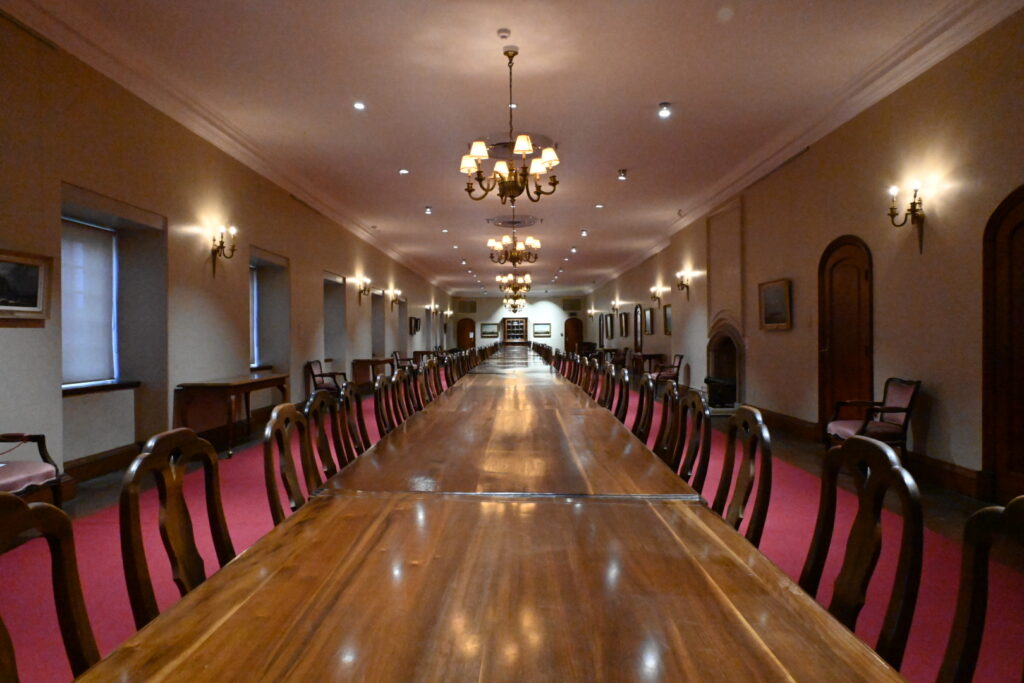
Joline also shares some of the history of the women of Cape Town, in particular that of Catherina Ras:
Catharina was a German woman who played a huge role in many aspects of Cape Town’s history. At 22 years old, she boarded a ship destined for South Africa, disguised as a man. She arrived in the Cape in 1662. She married a man named Hans Ras. On their wedding day, Hans was stabbed, but survived. However, just a short while later, he met his end when he was attacked by a lion. By all accounts, Catharina leapt onto her horse and hunted the lion down, shooting and killing it that same day. She was married a further two times, with further tragic endings: one was killed by tribesmen; another was trampled by elephants.
Now a single mother of four, she realised marriage wasn’t the security she needed, and she set out to own land. She approached the governor of the Cape, Simon van der Stel, and he gave her the land that is now home to Steenberg Wine Estate. This move pioneered private land ownership in Cape Town and established one of the oldest wine farms in the Cape.
(While Catherina’s story was originally recounted by Joline, I’ve included information from Capetown.travel to ensure I have the details correct.)
Of course, Cape Town’s story is also one repression and subjugation. We also tour the prison and torture chamber, and they are every bit as horrifying as you might imagine.
I won’t reproduce them in their entirety, but I was struck by one phrase engraved on the stocks:
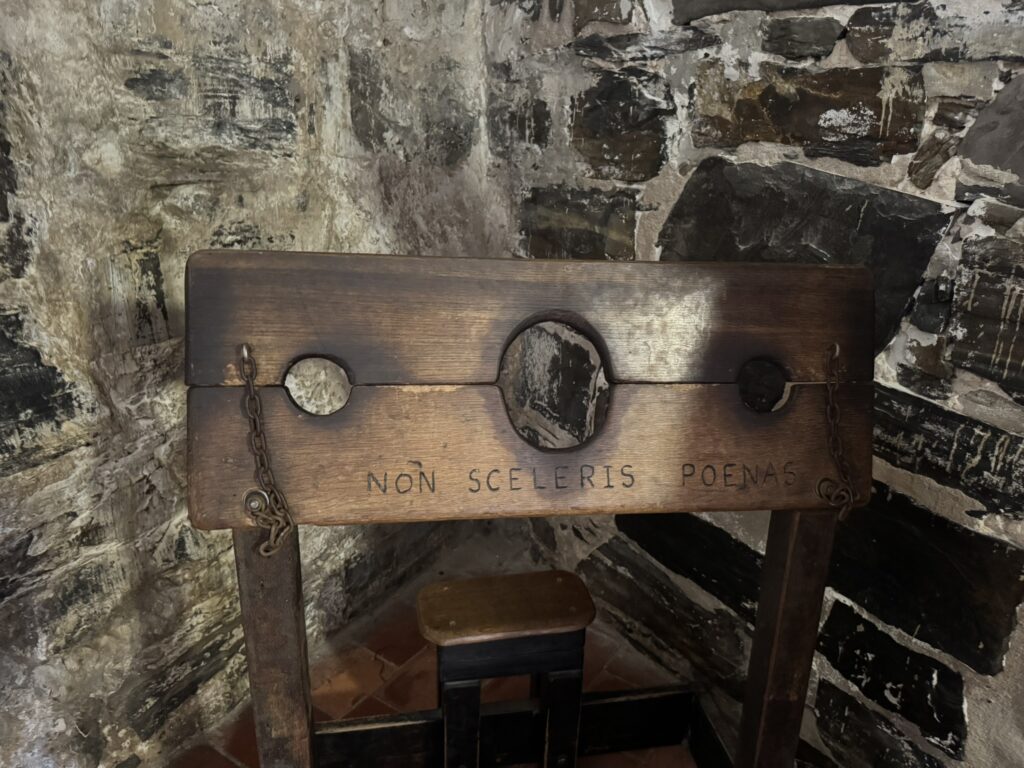
It means “Not a serious crime.”
If this is how the minor crimes were treated, you can imagine how the more serious offences were handled.
I will add that torture was often used as a means of forcing prisoners to confess, even if they had not actually committed a crime. It seems highly likely this was done more as a measure of ensuring control over the indigenous population and slaves than it was as a means of reducing crime.
Lastly, we are shown the Dolphin Pool in the back of the castle which had been covered up for an extended period before being uncovered and restored in the 1980s:

Lady Anne Barnard – a Scottish travel writer and author – is said to have bathed here in the nude.
Joline kindly gave us a drive to the Company’s Gardens once more, so that we can minimize the walking to the next stop in our tour:

We walk down Government Avenue, next to the South African Parliament – which was set on fire in 2022. Officially it was deemed a criminal act by a man experiencing homelessness, but there are rumours that past president Jacob Zuma may have somehow instigated the blaze.
We carry on past some lovely buildings:
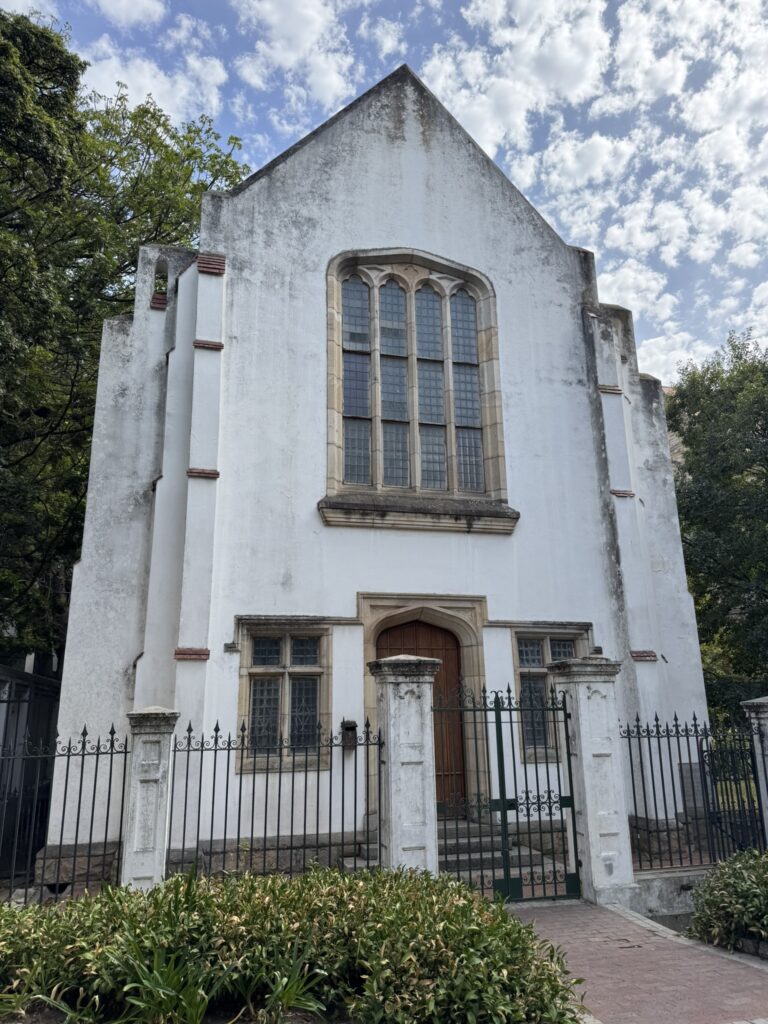
Until we reach the former Slave Lodge:
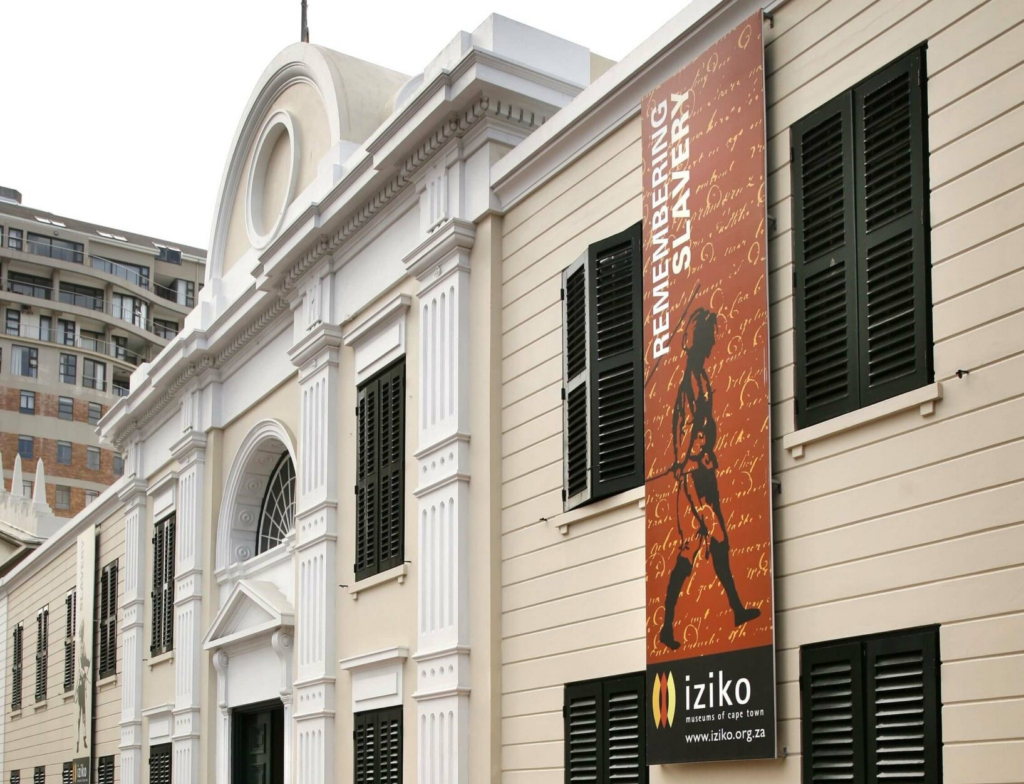
Photo credit: https://www.iziko.org.za/museums/slave-lodge/
I will not list out the horrors of slavey in detail – this was a chance for us to have a conversation with our children about what they know of slavery, and how they could better understand its short and long term impacts.
Personally, I was surprised to learn that slaves in Cape Town came from so many different regions – not just continental Africa but also Madagascar, India, Sri Lanka, and Indonesia.
Certain exhibits are also particularly impactful, such as this diagram of the interior area of a slaver ship:
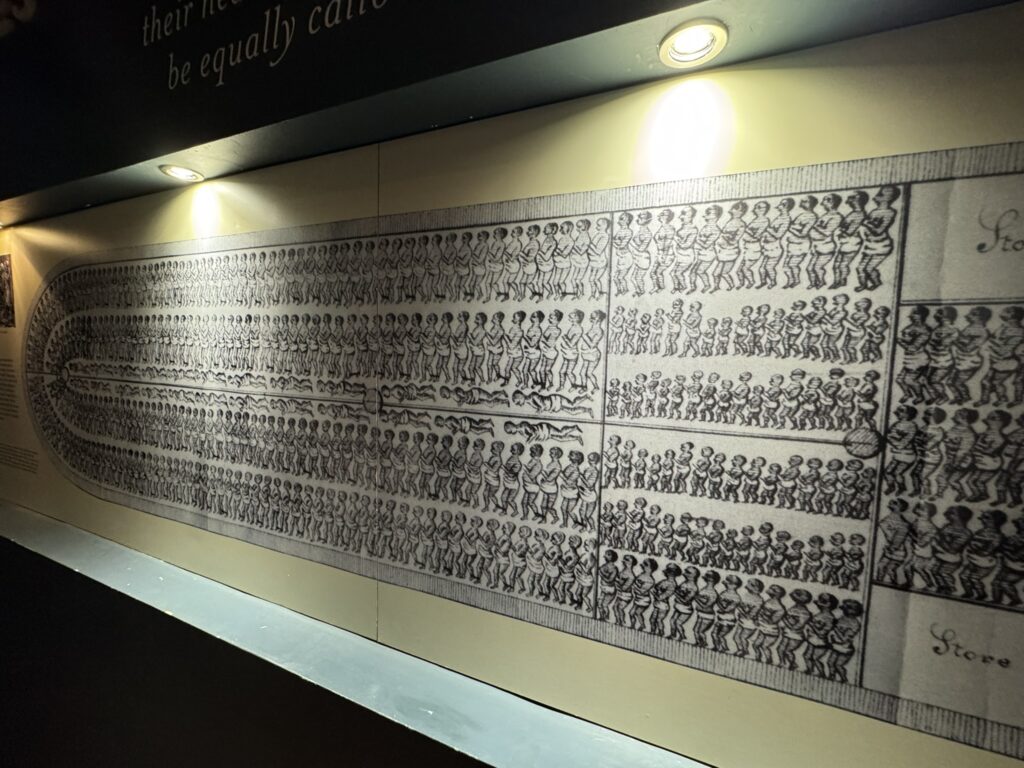
The Column of Memory, which contains the names of those who were confined to the Slave Lodge:

And the notices posted when children fled in search of their parents:
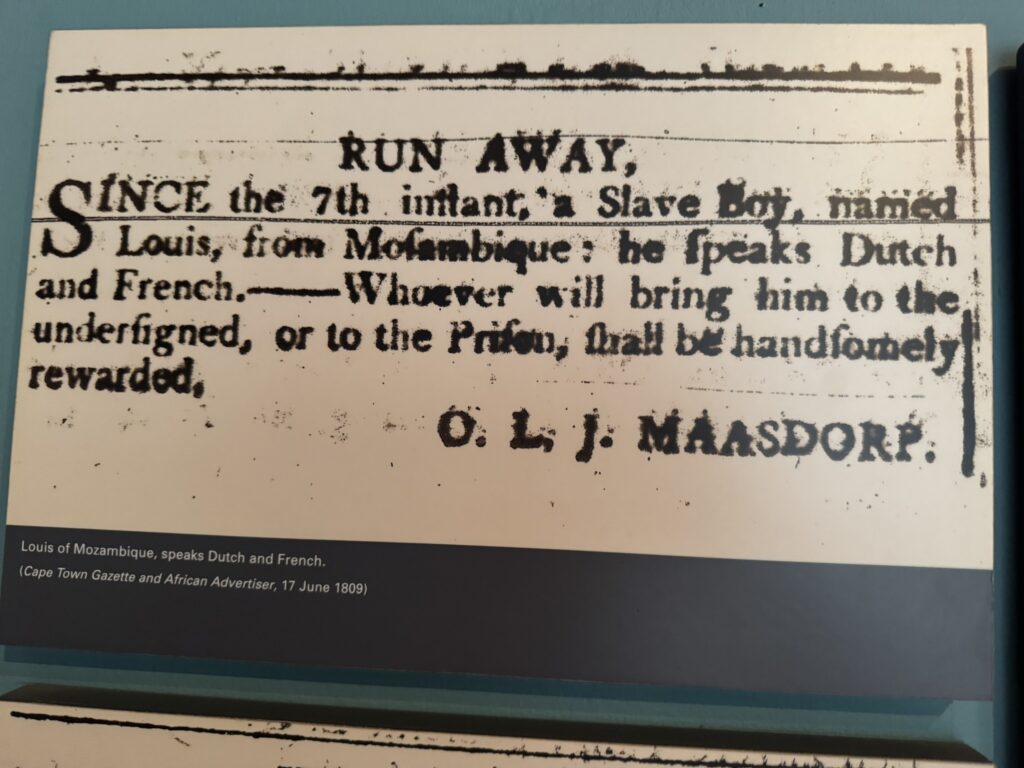
We are also surprised to learn of other methods of control, such as feeding the slaves on farms wine as a means of keeping them pliable and addicted, and the way in which the bell governed all aspects of their lives:
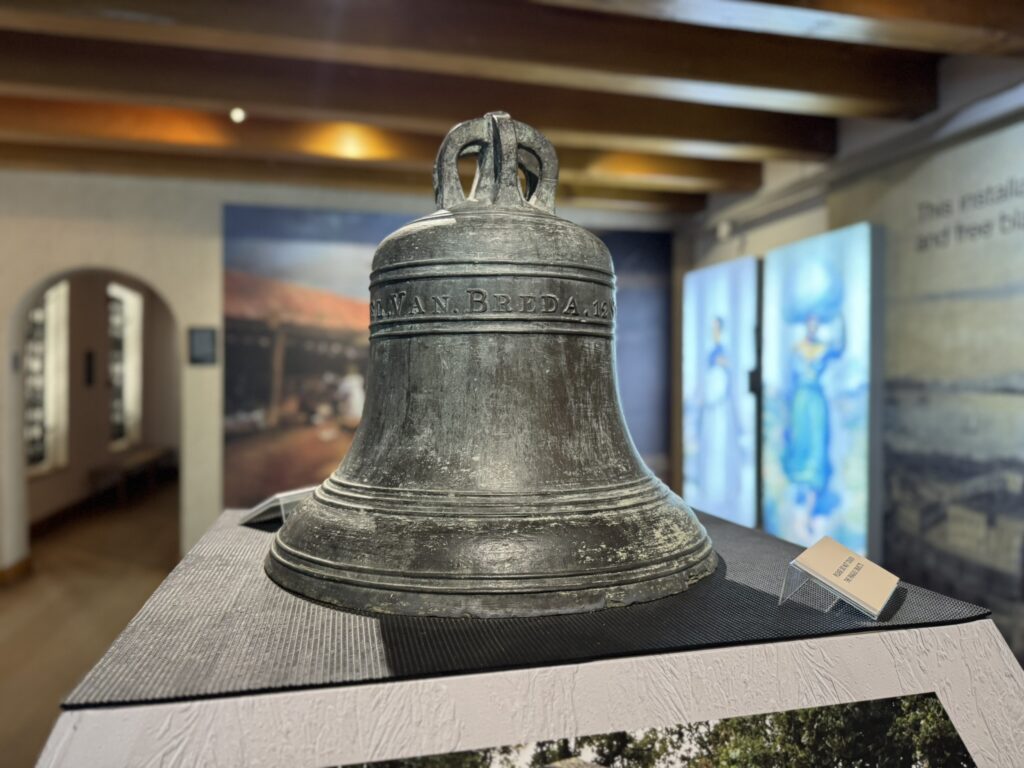
What struck us most of all were Joline’s own stories of living in apartheid South Africa. They were deeply personal, and so I do not feel comfortable sharing them here. But suffice it to say that – as much as South Africa has made tremendous progress – inequality is not ancient history.

We then make a brief detour so we can visit the section of the Berlin Wall that resides in Cape Town:
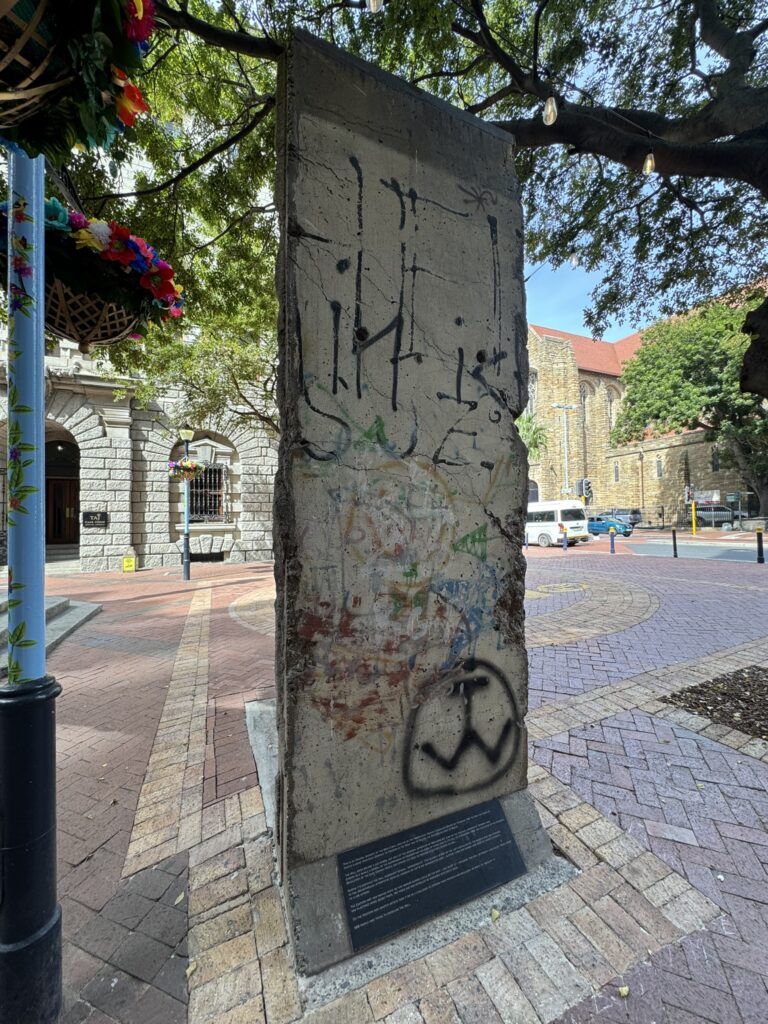
It feels fitting to visit another tangible reminder of how human beings can overcome difficult odds to live with freedom and dignity.
We then wander back through the Company’s Gardens, where we see one of the oldest trees in Cape Town:
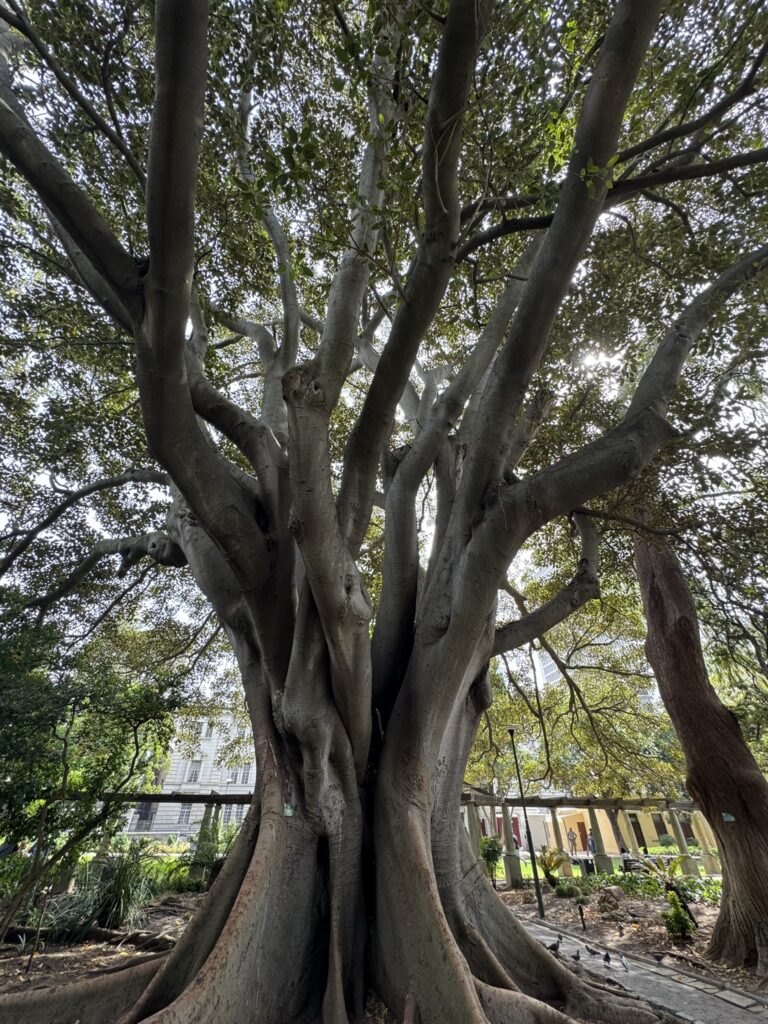
It’s believed to be more than 350 years old, dating back to the earliest days of Cape Town’s settlement.
It’s amazing how much a tour can change one’s outlook. What was before just a simple bell:

Now has much greater meaning.
We need a light-hearted moment after that, and we’re granted one when we come across a mother Egyptian goose and her baby goslings:
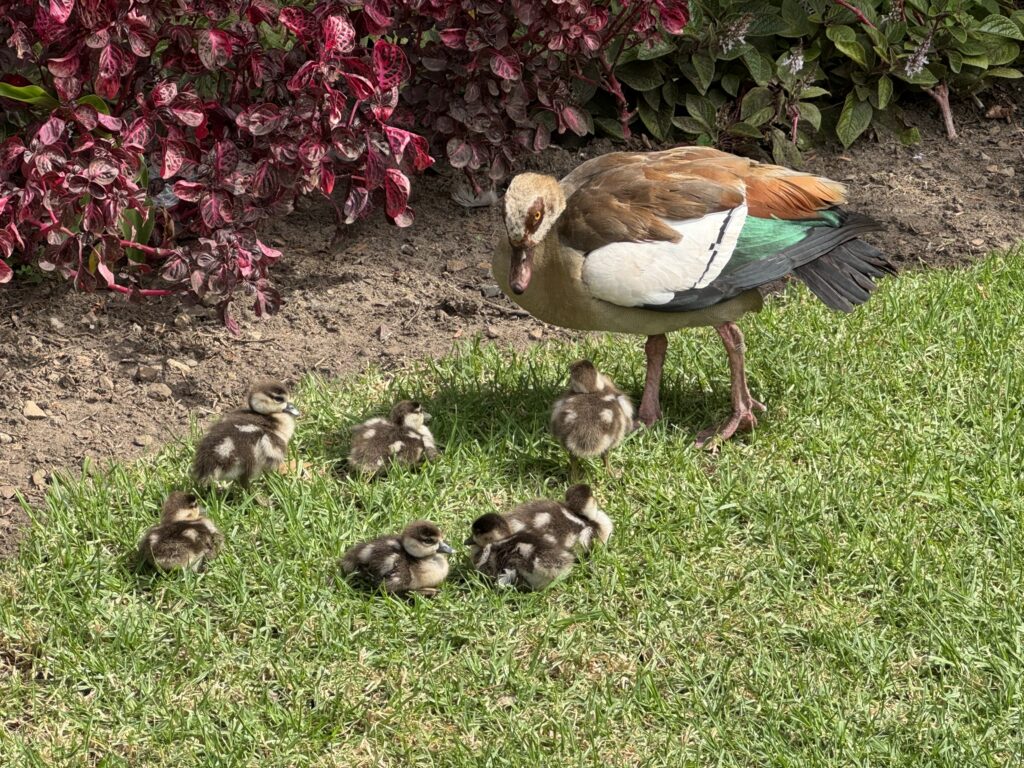
Not pictured – the mother goose kicking one gosling when it got too close
From here we wander back through the park and along the beautiful grounds of the Mount Nelson Hotel:

We stop briefly to admire some of its flowers:

Before we’re collected by our very expensive – yet exceedingly punctual! – driver.
Back to the waterfront, where we stop for lunch at La Parada:
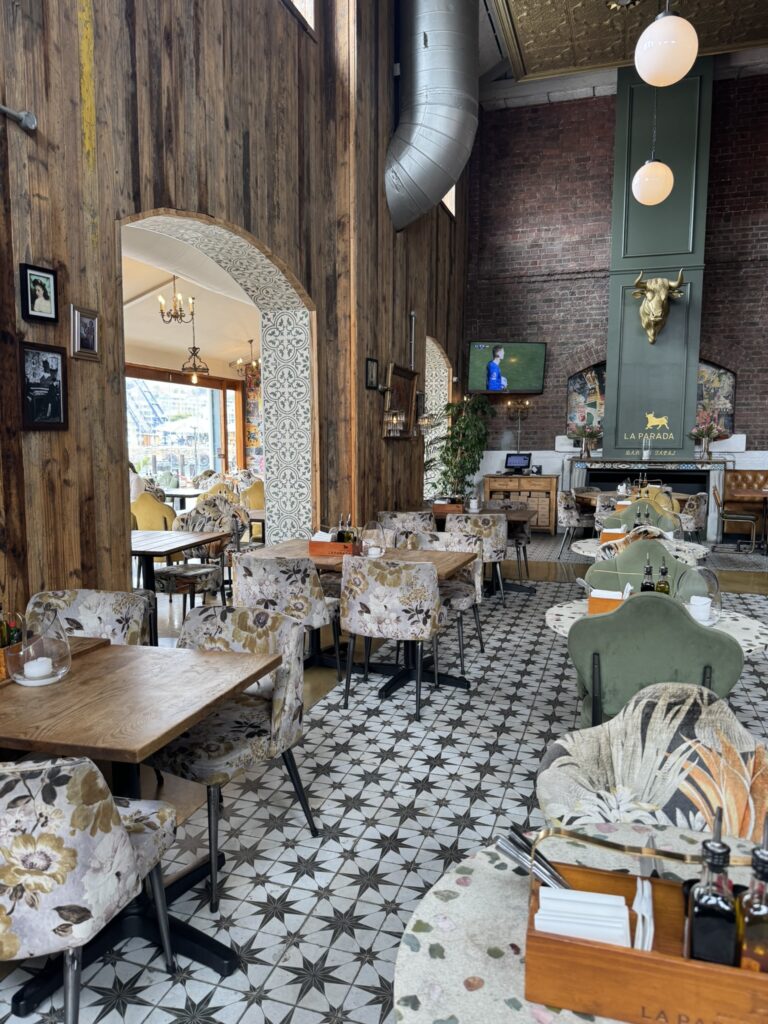
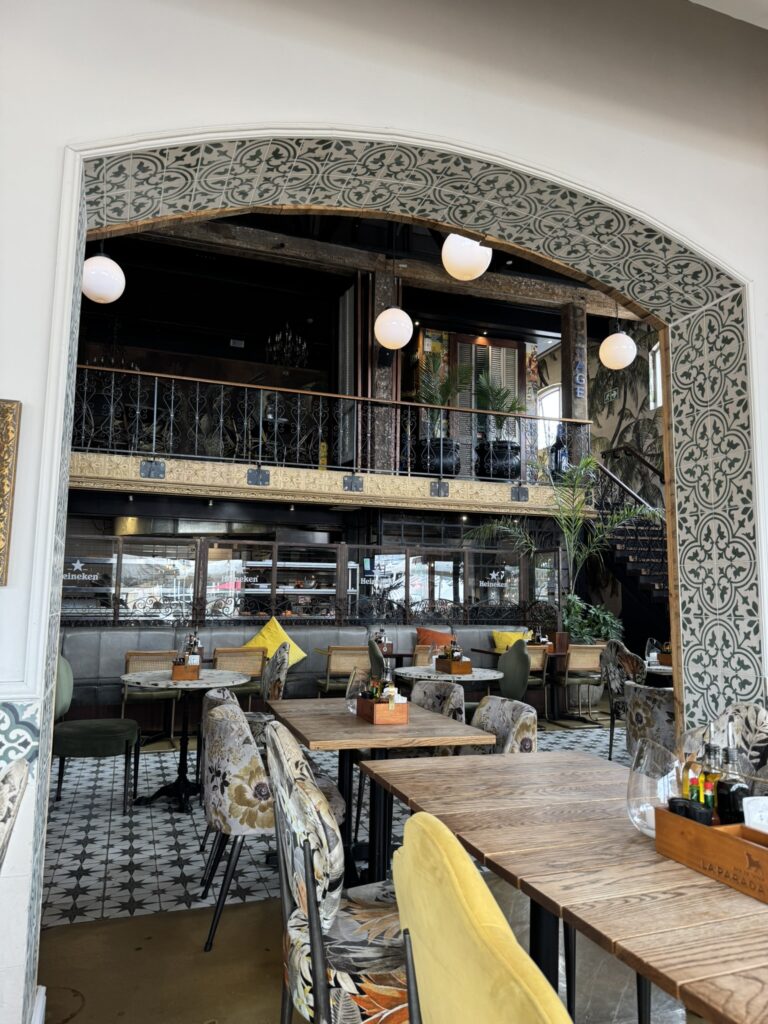
The building is stunning, with lots of character – and a view of the harbour.
I have the chicken burger:
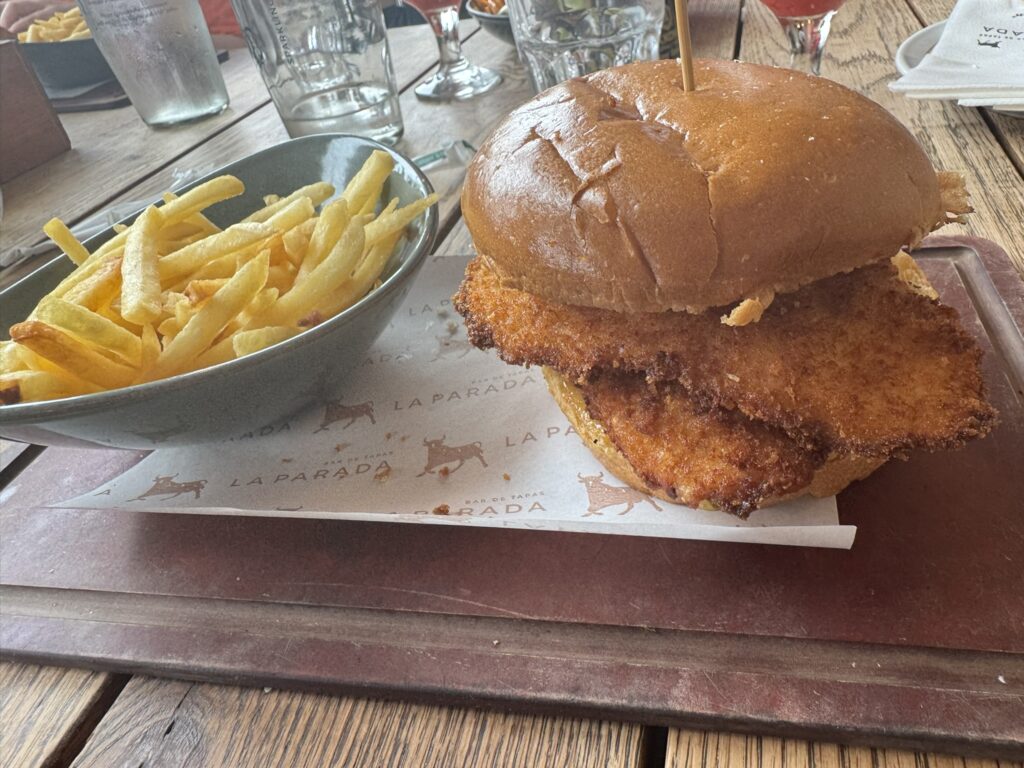
My wife has the tuna poke:
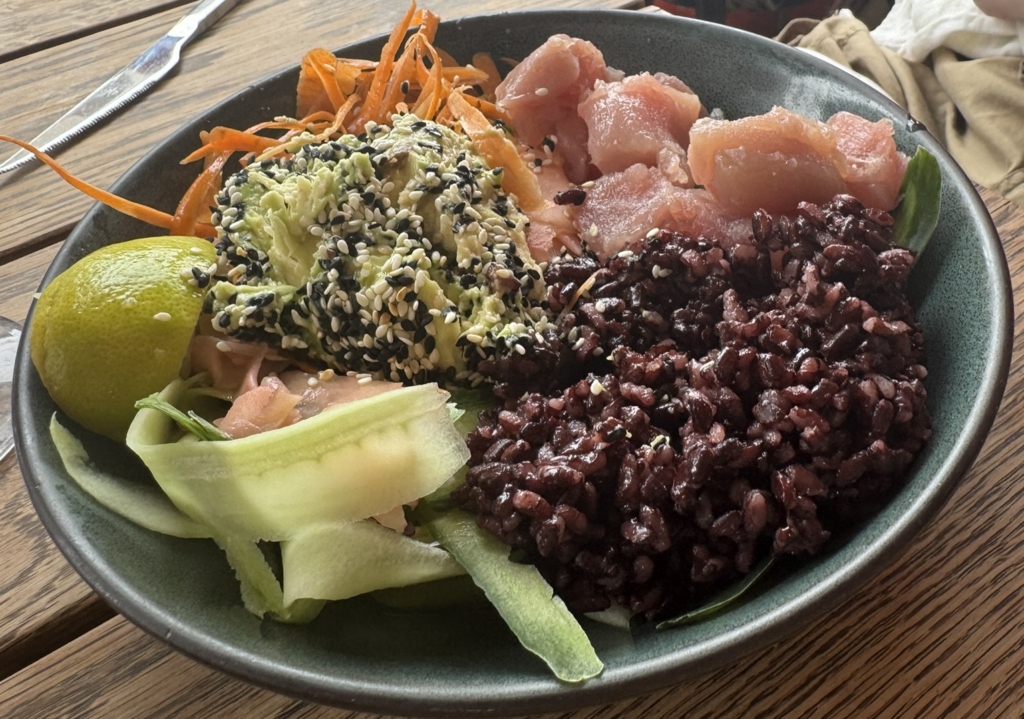
And the kids have burgers (not photographed). Very tasty, and again reasonably priced considering the touristy environs.
Back to the rooms for homework and to do a test-run of packing. We definitely miss travelling without weight restrictions.
Then off to Grand Cafe Africa for some beachside dining:
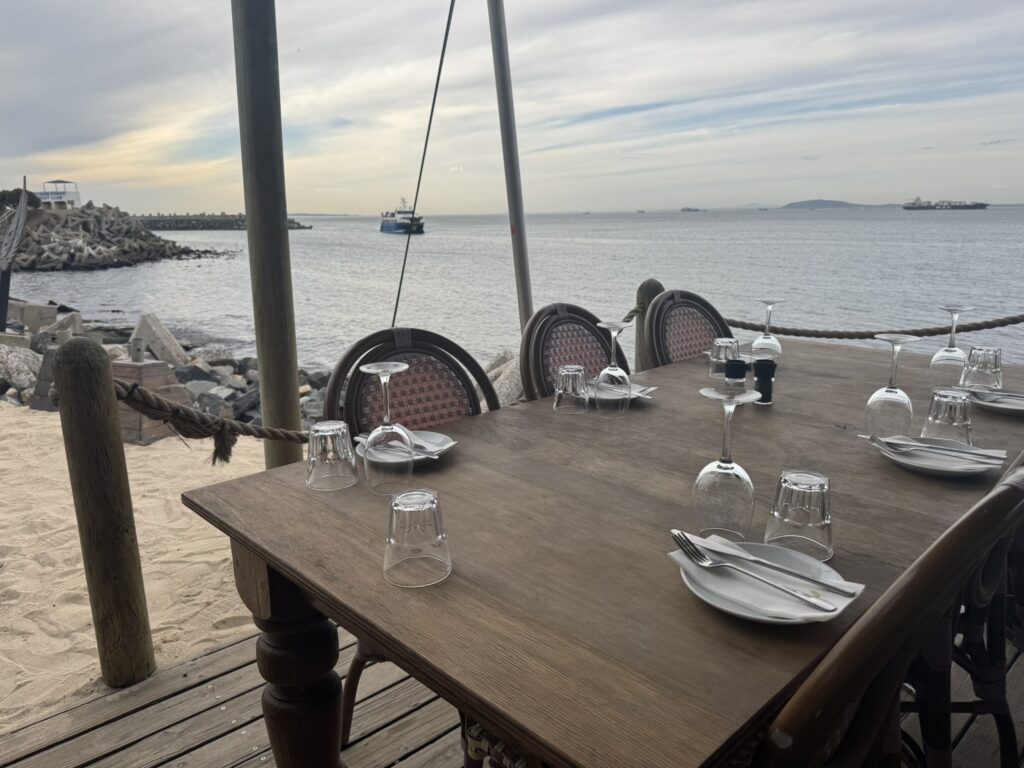
You can’t get right down to the water, but it’s about as beachfront as you can get in this part of Cape Town, with an upbeat beach-bar vibe.
My wife and I share some blurry grilled calamari:

As well as a very elabourate sushi roll:
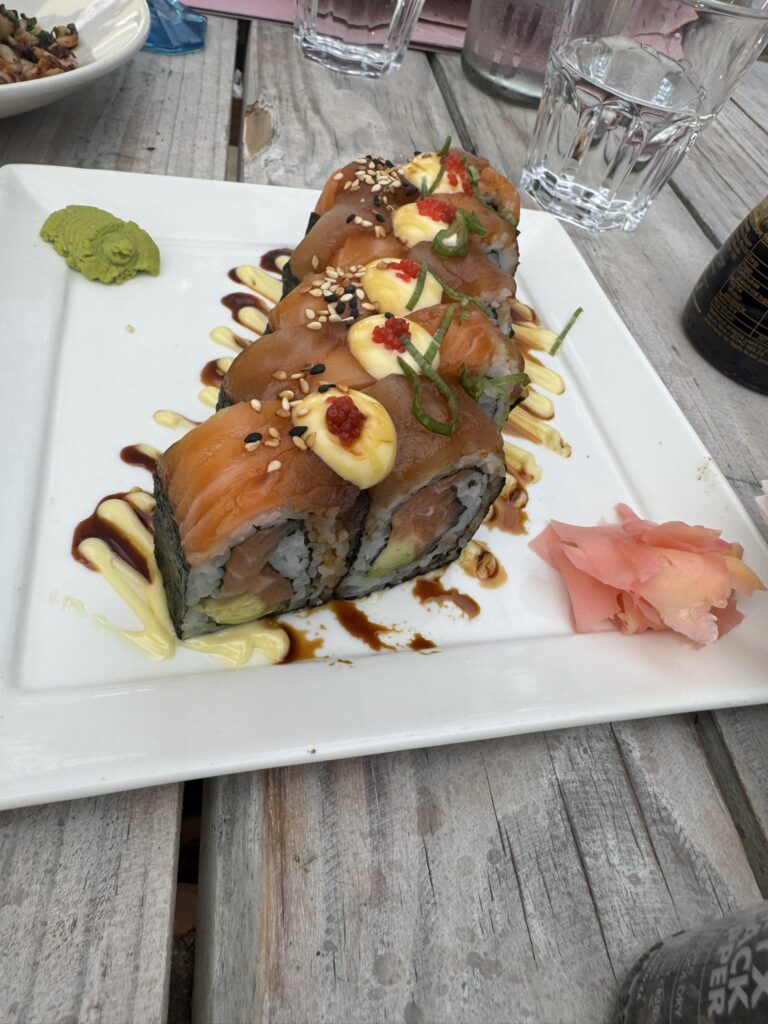
And the kids split the world’s largest pizza:
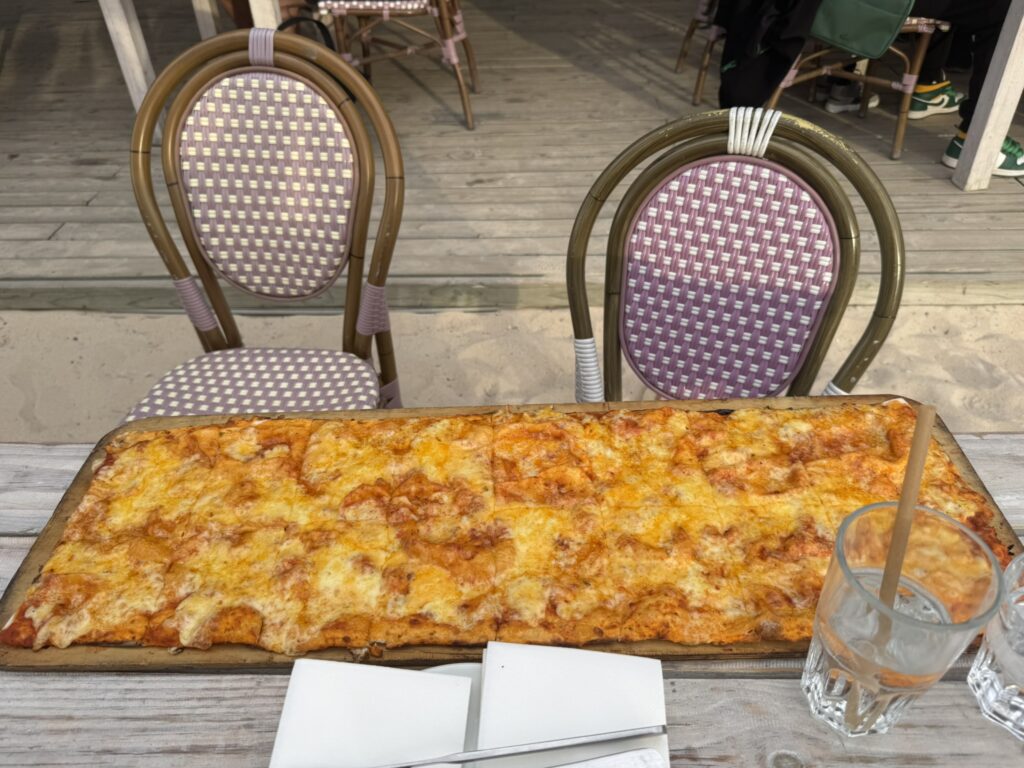
We hang out, we chat, and we watch the boats go past as the sun slowly sets:
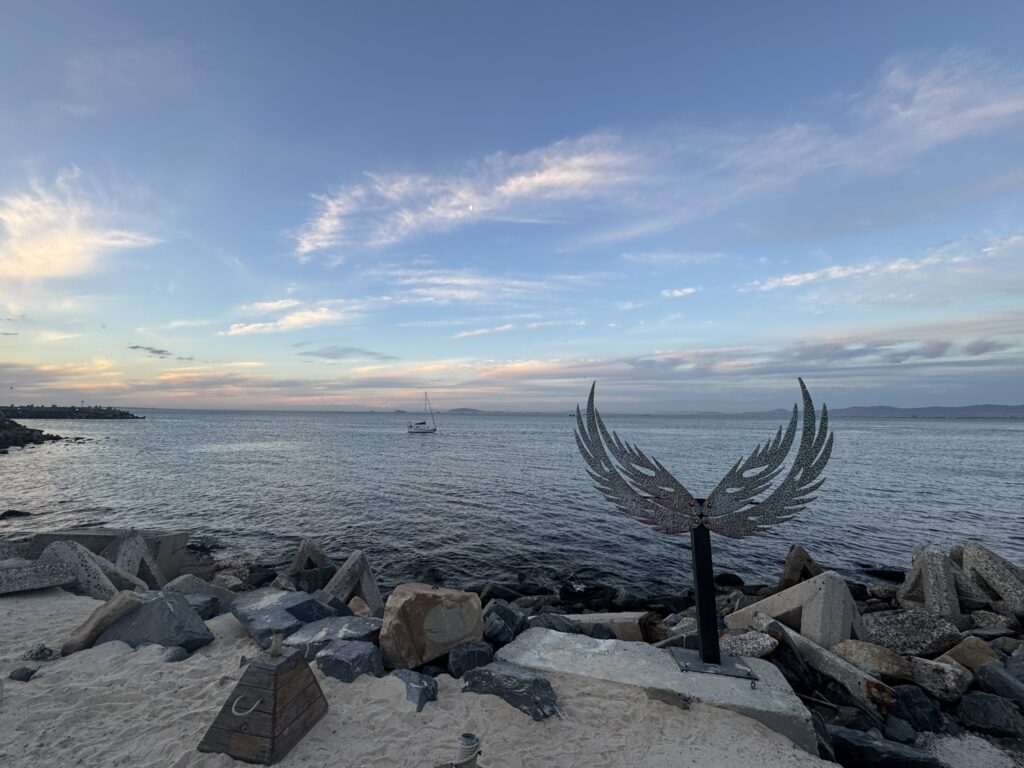
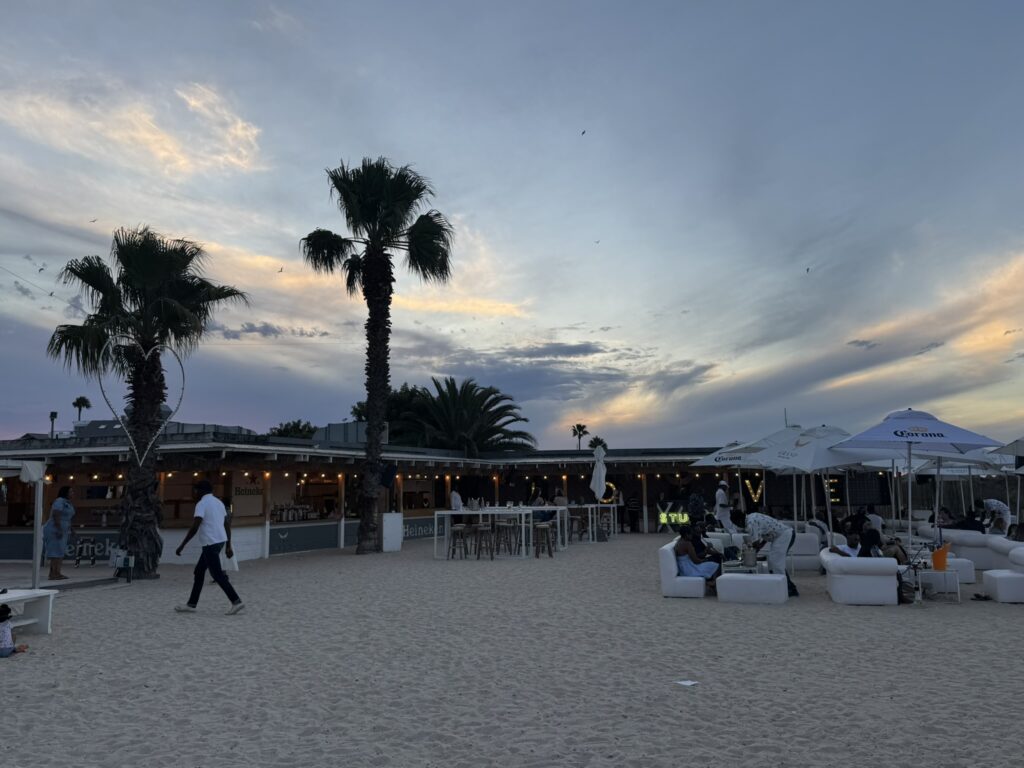
It’s the perfect temperature with the sun setting. However, it’s been strongly recommended that we are back inthe main V&A waterfront area by full dark – so we’re trying not to check the time too often.
The kids have chocolate pavlolva:
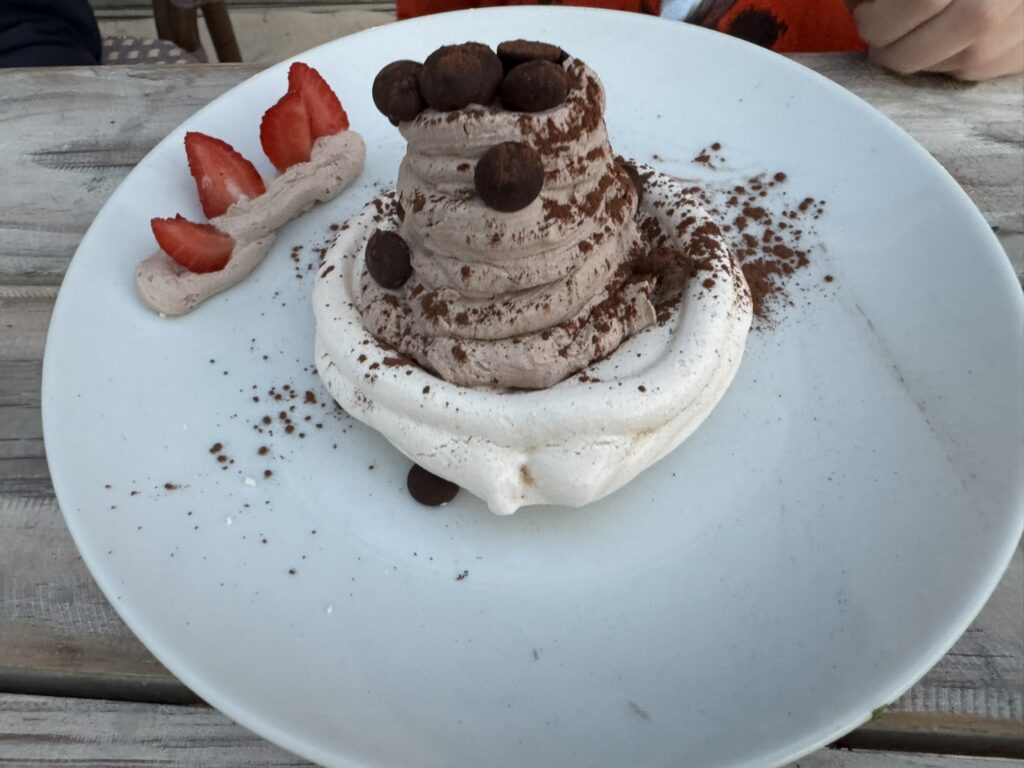
And the light show is spectacular:

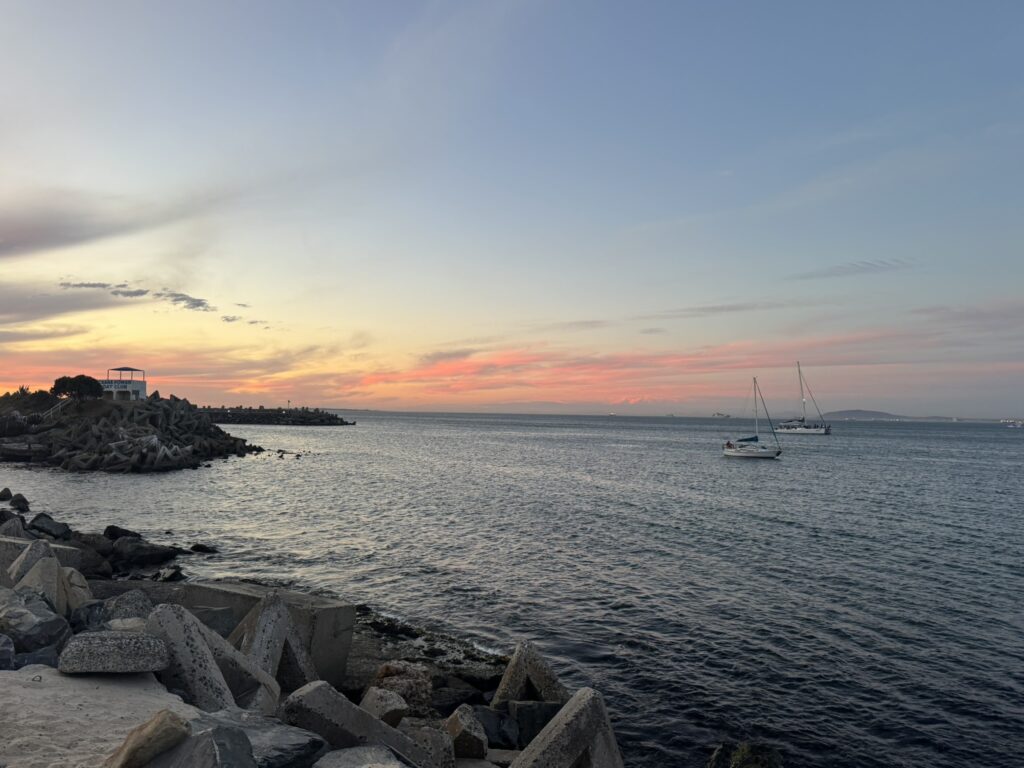
But we have an early morning tomorrow – and a jam-packed day – so it’s soon time to say goodbye to the Grand Cafe:
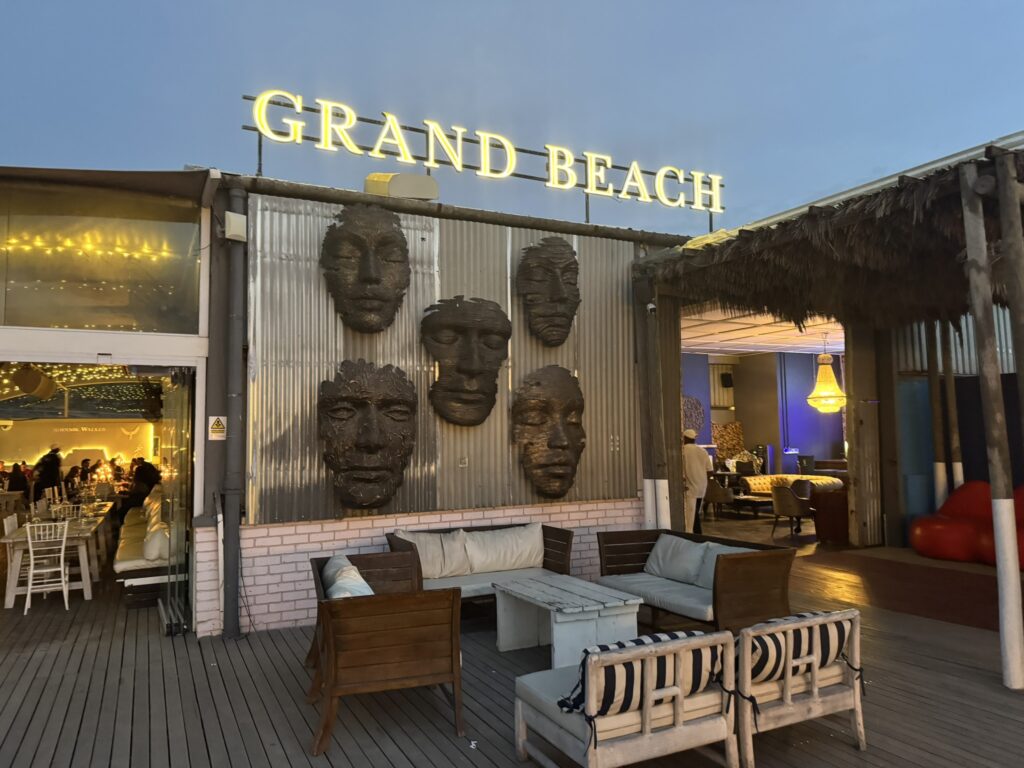
And we return to our hotel.
(We do indeed make it back to the main waterfront area without incident but given the crowds – and the level of inebriation among diners – we wouldn’t have wanted to be out by the roadways much later.)
